Climate change: How green is your parcel?
- Published
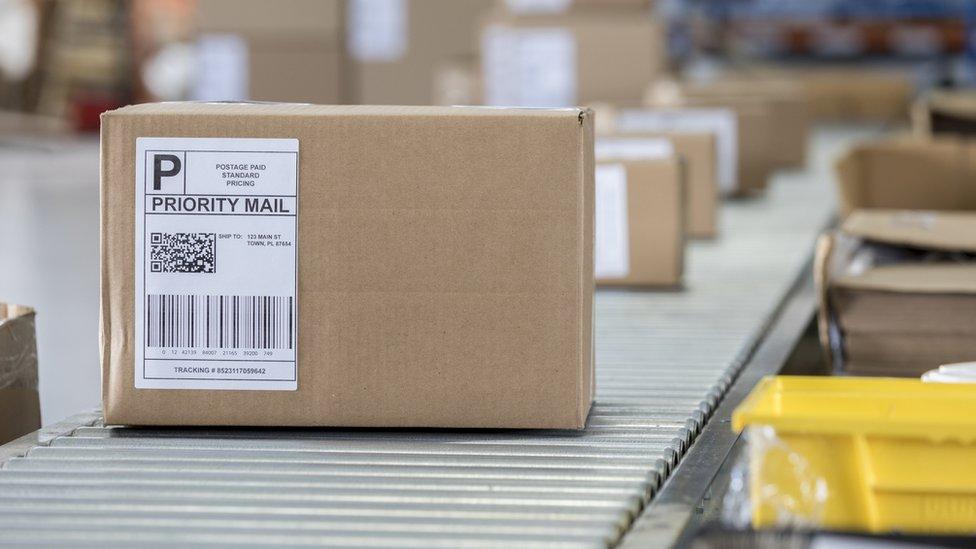
It's Friday lunchtime and you've found the perfect dress for that party on Saturday night but you're stuck at your desk.
No problem, because after a couple of clicks, it's in your basket and on its way to your home.
This is the joy of online shopping, and our love of it continues to grow.
In 2017, online sales increased by 15.9% to £59.8bn in comparison with 2016, while in-store sales saw a jump of only 2.4%.
But what price does getting something this fast cost the environment?
Green campaigners argue our demand for getting something delivered at speed - whether it's Amazon Prime or Premier Delivery on ASOS - is adding to carbon emissions.
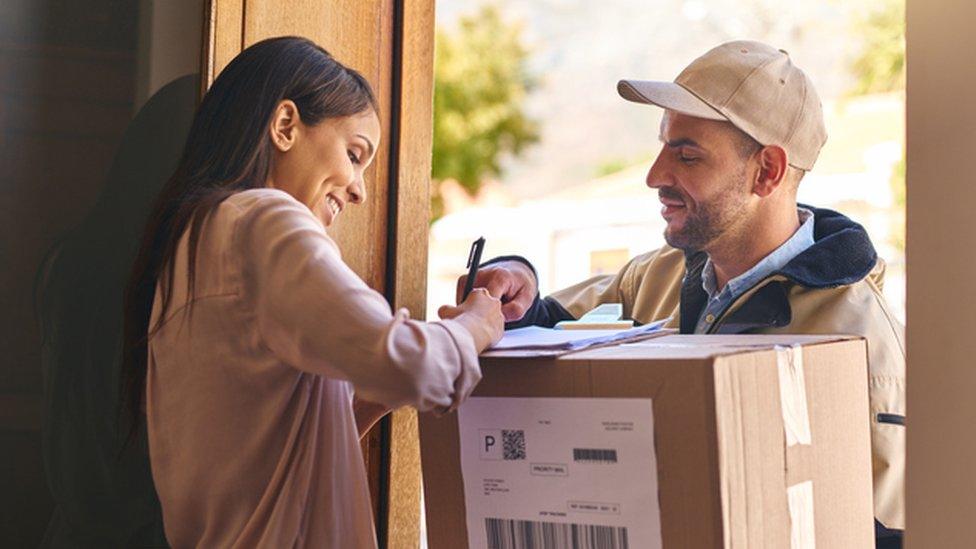
Online sales increased by 15.9% in 2017 in comparison with the previous year
"Transport is responsible for a huge chunk of the UK's carbon emissions and the levels are actually increasing," Muna Suleiman from Friends of the Earth says.
"Delivery companies are a significant part of this.
"We've seen some good progress on use of cleaner vehicles such as cargo bikes and electric vans, but we really need to see green deliveries becoming the norm."
How are delivery companies reducing emissions?
Each year, the Royal Mail delivers around 1.8 billion parcels - by foot, bicycle and gas guzzling vehicles.
The company says it's committed to reducing its carbon emissions further.
This week, Royal Mail is introducing eight e-trikes into its fleet.
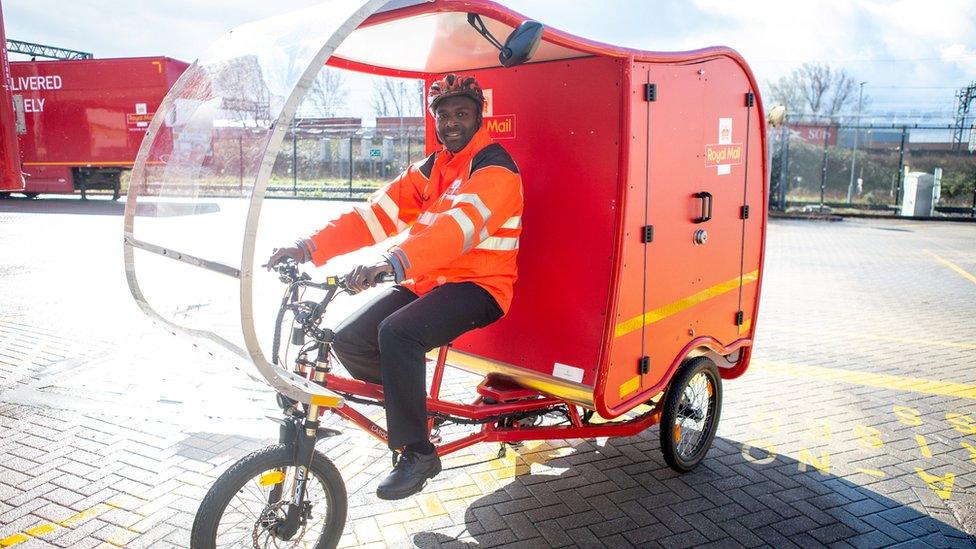
E-trikes are powered by a combination of pedal and battery power
The vehicles are powered by a combination of pedal and battery power and will be used to make deliveries by posties in Cambridge, Sutton Coldfield and Stratford in London.
It's part of a six-month trial and if successful could see the scheme extended.
"Our e-trikes are zero emission vehicles," David Gold, Royal Mail's director of public affairs and policy, explains.
"The 48v lithium battery is charged overnight by mains power but is supplemented by solar panels on the roof of the vehicle.
"Regenerative braking also helps to power the bike."
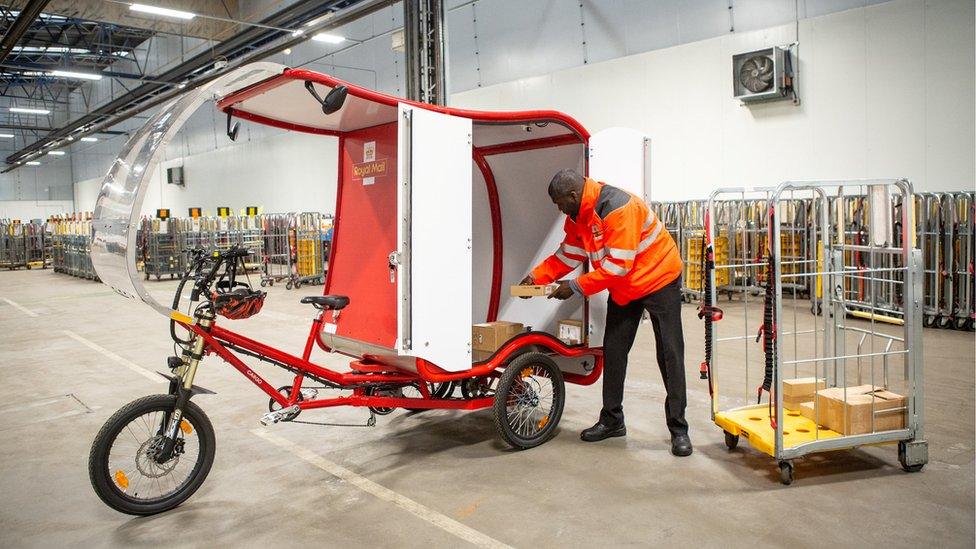
The electric trikes will deliver parcels in Cambridge, Sutton Coldfield and Stratford in London
Royal Mail already has a fleet of 100 electric vehicles and has announced plans to expand it.
"We have the largest 'feet on the street' network of 90,000 postmen and women, and we have reduced carbon emissions by 29% since 2005, but we want to find even more environmentally friendly ways to deliver to 30 million homes across the UK," David Gold adds.
In April, an Ultra Low Emission Zone will be introduced in central London to try and reduce air pollution.


It means some of the most-polluting vehicles will be charged for entering the city centre.
The government wants other towns and cities to follow the capital's lead, and many delivery companies say they're already prepared for it.
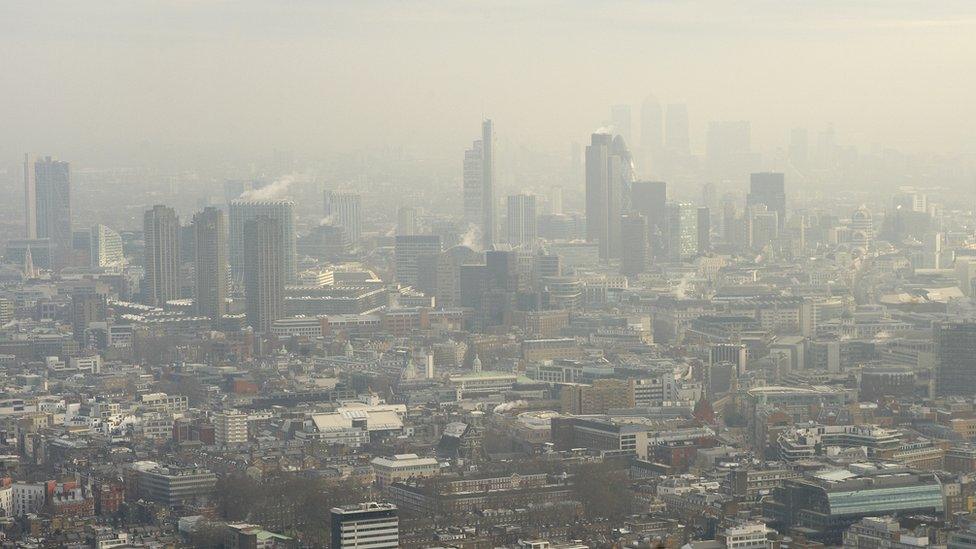
On 8 April an Ultra Low Emission Zone is introduced in central London
Investing in 'greener' alternatives
Yodel is one of them. It says it's making "significant investments" to reduce its carbon footprint.
It delivers around 145 million parcels each year in the UK - in its peak period it says it delivers around one million a day.
"We have invested in technology to calculate the most efficient routes and evaluate our drivers' driving style to further reduce our carbon footprint," Yodel's CEO Andrew Peeler says.
"We've been working with cycle couriers in a number of towns for many years and are introducing electric to our fleet this Spring, while also trialling compressed natural gas powered trucks."
DPD says it's changing the vehicles it uses in the future too.
The company normally orders one thousand diesel Mercedes Sprinter vans every year, but says it's now only going to purchase electric in future.

DPD says it will only purchase electric vehicles in the future
It's already got three all-electric micro-depots and is aiming to have eight in London.
In a statement DPD said: "We see ourselves at the forefront of this technology but can only go as fast as the vehicle manufacturers allow."
Hermes is also going down the electric vehicle route - at the moment it's got 32 electric vans operating in London.
Additionally, the company, which delivers 335 million parcels in the UK each year, claims to be the first in the market to use bio methane fuel to power 30 vehicles.
It says it's placed the largest opening order of thirty Compressed Natural Gas tractor units after a year-long trial.
The vehicles now make up nearly 20% of the 166 tractor units in the fleet.
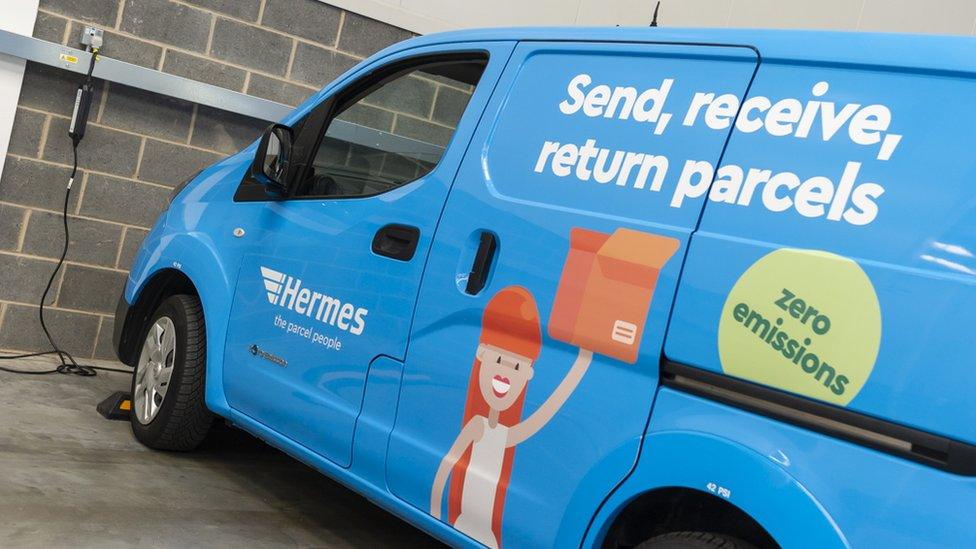
Hermes has 32 electric vans operating in London
Delivery companies 'need to go further'
Although delivery companies are starting to make changes, some critics say they need to do more.
"We need to see delivery companies switch their entire fleet of vehicles to ones powered by clean energy," Doug Parr, chief scientist for Greenpeace UK, says.
"To be truly clean, these would need to be charged by renewable power rather than fossil fuel."
It's not just about how the vehicles are powered though.
"It's essential they're constructed in a way that keeps their environmental footprint as small as possible, and so that their components can be re-used and recycled at the end of their lives," Doug says.
"If an electric car were manufactured and used where the main source of energy was coal this would seriously dent its green credentials."
The campaign group also says it wants to see more bicycles and e-bikes used to reduce emissions and pollution.

'I'd never considered my fashion carbon footprint'
Hannah Morgan admits she was addicted to shopping online.
She'd spend up to £9,000 a year buying clothes online - returning most of them.

Hannah's decided to stop buying clothes to cut her carbon emissions
"I knew I was likely to return 80% - 100% of my order, and with free delivery and convenient time-slots to choose from, my online shopping addiction felt harmless.
"At no point had I considered the carbon footprint of each of my orders."
Hannah gave up buying clothes online at the start of 2019 after watching Stacey Dooley's latest documentary on fast fashion.
"I was in shock over the environmental impact the fashion industry is having, while simultaneously trawling through my ASOS app unconsciously adding things to my basket, ready for instant purchase and free next day delivery."
Hannah has tried to stop the temptation of buying by deleting shopping apps and unsubscribing to all marketing emails.
"It's early days but I'm enjoying seeing things differently and am hopefully making a small but positive impact in the process."

Campaigners say consumers don't have to take drastic action like Hannah in order to cut emissions.
"By choosing companies using greener delivery methods you can show that the consumer demand to cut emissions is there", Muna Suleiman from Friends of the Earth, says.
"If you have a 'click and collect' location within walking distance of your home or work this can also cut down on the number of miles driven by each van."
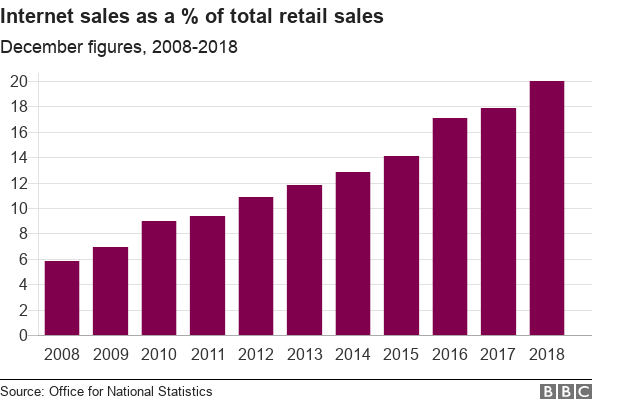
What about the big online retailers?
Whilst Amazon doesn't directly deliver its parcels, it has recently committed to make "all Amazon shipments net zero carbon, with 50% of all shipments net zero by 2030".
In a statement it says: "With improvements in electric vehicles, aviation bio fuels, reusable packaging, and renewable energy, for the first time we can now see a path to net zero carbon delivery of shipments to customers."
But Doug Parr from Greenpeace UK says companies like Amazon could impose "stricter standards" on the delivery firms they use.
"Responsibility for this goes right up the chain of command - Amazon is generating the business so Amazon should be asking how its delivery agents are making those deliveries clean.
"If they wanted to impose standards they could."
Is click and collect the answer?
Whilst our appetite for online shopping is in no way declining, click-and-collect services could be one way to cut emissions.
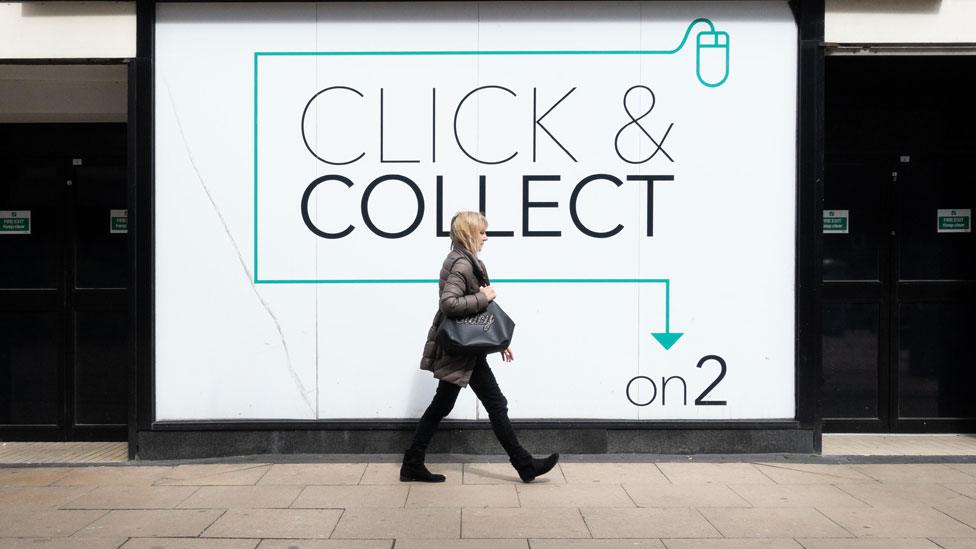
Customers collect the goods at a local shop or designated pick-up point, like a newsagent or garage, when it's convenient for them.
It's not just convenient for the consumer but with deliveries going to one place, emissions are instantly reduced.
However, it could be entirely counter productive, if the customer takes their diesel or petrol car to pick that parcel up.
- Published3 May 2019

- Published25 January 2019

- Published6 October 2018
